British pathe что это
British Pathé
Highlights from British Pathé and the Reuters historical collection
In the News
New Zealand Aims to End Smoking
With news that New Zealand will outlaw cigarette sales to its next generation, we look back on this 1957 clip examining ‘coffin nails’. The film profiles the health risks of smoking, as well as the lucrative industry produced by tobacco.
British Pathé Blog
In Remembrance of Prince Philip, 1921 – 2021
No doubt you are aware of the incredibly sad news that has been announced today. The history of British Pathé is very much intertwined with that of the Royal Family and our sympathies are with them at this unhappy time, especially with Her Majesty the Queen. British Pathé filmed the
Read More
New Video Treasure Trove Available on YouTube
My Lai Massacre, Salt March begins and more
26th February 2020
Labour Party Founded, Cologne Captured and more
License Footage for Your Production
Reuters Historical Collection
British Passions on Film
Editor’s Picks
Duke’s Magic Lunch Date
Comedian Tommy Cooper has as an assistant Prince Philip at Variety Club luncheon, 1955.
Peru: Balloonists Probe Two-Thousand-Year Old Mystery Of The Carvings On The Nazca Plains.
New to the Archive: This 1976 clip follows researchers in a balloon to examine the 2,000 years old mystery of the Nazca Plains carvings.
New to the Archive: This film of the 1963 Florida State Fair covers all the hi-jinks of a car stunt demonstration team!
Usa: Agnew Golf Balls Are A Big-Business Proposition
New to the Archive: This film from 1970 looks back on the manufacture and sale of Spiro Agnew golf balls- at the time there seemed to be a craze for memorabilia relating to the former US Vice President!
Oman: Replica Of Early Arab Deep Sea Trading Ship Launched To Carry Expedition To China.
New to the Archive: This film looks back to 1980 and a launch of a replica early Arabian ship used to travel to China in Oman.
India: 50,000 People See World’s First Camel Polo Match.
New to the Archive: This week, its a trip back to 1977 and the world’s first camel polo match in India!
The Golden Anniversary Of Custer’s Final Battle Is Observed
New to the Archive: This film looks back to 1926, and a re-enactment of the Battle of the Little Bighorn (1876).
Usa: Vice President Agnew Misdrives Twice And Hits Two In Audience Of Charity Golf March.
New to the Archive: This film looks back to 1971, when US Vice President Spiro Agnew accidentally misdrove twice whilst playing golf, hitting the ball into the crowd on both occasions!
Uk: Giant Pandas Meet Again.
New to the Archive: This film looks back to 1981 and the meeting of two pandas at London Zoo.
Peru: Cocaine Toothpaste.
New to the Archive: This film looks back on 1983 and the manufacture of cocaine toothpaste in Peru.
Usa: «Old Ironsides» Spruced Up For Bicentennial
New to the Archive: This film looks back to the USA Bicentennial year of 1975, and the re-opening of the USS Constitution after a 2-year overhaul.
Легендарная компания British Pathé выложила на YouTube 85000 документальных фильмов 1896–1976 годов
Тысячи часов уникальных видео об исторических событиях, культуре, знаменитостях, моде от начала до второй половины XX века теперь доступны для бесплатного просмотра на YouTube.
Одна из самых старых медиакомпаний мира British Pathé разместила на YouTube полную коллекцию своих документальных фильмов и новостных выпусков — 85000 роликов, которые снимались с 1896 по 1976 годы. Более 3500 часов видео отражают как главные исторические события, так и менее значительные, но столь же интересные для тех, кто хочет лучше узнать жизнь людей прошлого века.
Аластер Уайт (Alastair White), генеральный менеджер British Pathé, говорит: «Мы надеемся, что каждый человек, у которого есть компьютер, сможет посмотреть эти фильмы и получит удовольствие. Этот архив — настоящий клад, не имеющий себе равных в историческом и культурном значении, и он не должен быть забыт».
Компания British Pathé уходит корнями в 90-е годы XIX века, когда Шарль Пате (Charles Pathé) вместе с братьями создал в Париже студию для съемки фильмов. В последующие десятилетия компания производила фильмы информативные, но при этом в своем уникальном развлекательном стиле, и несколько раз продавалась другим компаниям. Филиалы Pathé cуществовали и в России. Pathé прекратила деятельность в 1970 году, не выдержав конкуренции с телевидением.
Теперь весь видеоархив компании, накопленный за долгое время ее работы, доступен для бесплатного просмотра. Впрочем, профессиональное коммерческое использование материалов по-прежнему требует приобретения лицензии.
Посмотрите, например, видео знаменитого крушения дирижабля «Гинденбург» в 1937 году.
От переброски солдат до соревнований советских водителей: история развития такси в объективе British Pathe
Привет! Я Гриша, редактор inDriver. Об истории развития такси в российском интернете написано немало. Можно вспомнить серию статей Кирилла Левина, посвященную развитию московского такси с царских времен до хрущевской оттепели. Отличный материал под названием «Генезис российского таксомотора» выпустил в 2009 году Станислав Кирилец.
Вышеперечисленные материалы богато иллюстрированы — приведены архивные фотографии, сканы газет и журналов тех лет. Не хватает одного — видеоматериалов, показывающих такси тех лет в действии.
Как раз этим и займусь — продемонстрирую ролики с транспортными средствами XX века и расскажу об их технических характеристиках. Видео представлены в хронологическом порядке: от самого раннего к самому позднему. Время стереть пыль со старых моторов и завести их!

British Pathe — один из пионеров в съемке мировой кинохроники. С 1896 по 1978 год компания сняла более 85 тысяч документальных роликов, посвященных основным событиям истории, модным тенденциям, путешествиям, технологиям, науке и культуре.
Большая часть архива доступна для просмотра на YouTube-канале British Pathe.
1914 год. «Марнское такси» и Первая мировая война
Первый год «Великой войны» — так современники называли Первую мировую войну. На западном фронте немецкие войска активно продвигаются вглубь Франции. Французская армия отступает, а противник приближается к столице — до Парижа около 50 километров.
Но у французов появляется шанс не допустить захвата столицы. Чтобы добраться до Парижа, немецкие армии должны пересечь реку Марна, а значит они уязвимы для нападения.
6 сентября 1914 года французы начали крупное наступление против немецких войск, переправившихся через Марну. Для быстрой переброски солдат французское правительство прибегает к экстренным и одновременно неординарным мерам — к отправке солдат на место боевых действий присоединяются такси.
Для переброски использовались автомобили Renault AG1, которые могли развивать максимальную скорость 40 км/ч. Подобно кабриолету, в них можно было поднимать или опускать верх, чтобы открыть или закрыть кабину. В то время в городе насчитывалось более 10 000 такси, но для перевозки власти реквизировали всего 1 300 машин, потому что большинство водителей уже были призваны на фронт.
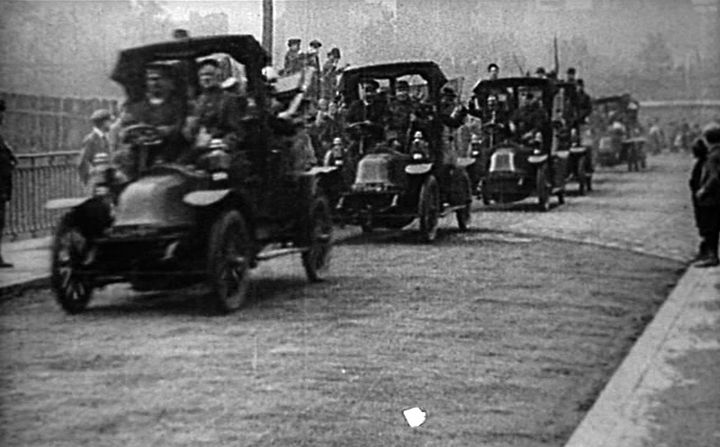
Такси перевозили солдат ночью, чтобы их не обнаружили немецкие разведчики. Автомобиль в те годы был относительно новым изобретением, поэтому, по воспоминаниям современников, солдаты были в восторге от поездки (если, конечно, можно быть в восторге, отправляясь на фронт). К концу двухдневного транспортного дежурства машины доставили 3 батальона, то есть около 6 000 человек. Это была первая в истории автомобильная перевозка солдат.
Для немногочисленного количества таксистов, не призванных на фронт и продолжавших работу на улицах Парижа, переброска оказалась отличным способом заработать. Дело в том, что таксометры во время поездки к месту сражения не выключались. Таксисты работали по тарифу, равному 27% от показаний счетчиков, и получали за поездку в среднем по 130 франков из государственного бюджета. Всего французское правительство выплатило водителям 70 102 франка.
Что касается битвы, то к 9 сентября немецкие войска полностью отступили и были отброшены назад через Марну, больше не угрожая Парижу. Но влияние такси на сражение было минимальным. В лучшем случае они перевезли около 0,5% от общей численности французских войск (в сражении участвовало более миллиона французов). Хотя сама история примечательная и памятная.

1923-1931 год. Первые взлеты и падения воздушных такси
С течением истории продолжали развиваться и технологии. В 20-х годах XX века появляются не только наземные, но и воздушные такси. В 1923 году British Pathe сняли посадку французского пилота М. Бехелера прямо на стоянку парижского таксопарка. Разумеется, это не очень законно, поэтому в кадре показали жандармов, которые записали имя и адрес несостоявшегося «таксиста».
Но в 1920-х годах было и вполне легальное воздушное такси. Правда, как и сегодня, услугой пользовались люди с большим достатком. В видео 1927 года пилот Лестер Гамильтон на самолете-амфибии Vickers Viking Napier высаживает своих пассажиров, принцессу де Левенштейн и герцога де Немур, у дверей отеля в Альпах.
Vickers Viking — британский одномоторный самолет-амфибия, разработанный после Первой мировой войны. Скорее всего, в ролике представлена модель Viking IV, оснащенная 12-цилиндровым двигателем Napier Lion с водяным охлаждением и мощностью 450 лошадиных сил. Самолет вмещал до 3 пассажиров, развивал скорость в 182 км/ч и мог летать почти 5 часов без посадки на землю.
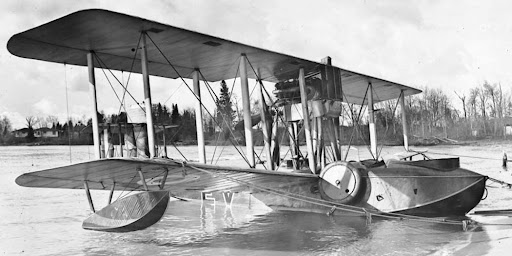
На заре первых регулярных перелетов катастрофы воздушных судов случались регулярно. Вот одна из них — 21 июля 1930 года самолет Junkers F 13 ge с 2 пилотами и 4 пассажирами, летевший из французского Ле-Туке в британский Кройдон, потерпел крушение около деревни Меофема в графстве Кент. Борт принадлежал подполковнику Джорджу Хендерсону и был передан в аренду авиакомпании Walcot Air Line для выполнения частных чартерных рейсов.
На борту самолета находились влиятельные особы — 3-й маркиз Дафферин и Ава Фредерик Гамильтон-Темпл-Блэквуд, виконтесса Эднам Миллисент Сазерленд-Левсон-Гауэр и баронет из Веллинтона Джозеф Джордж Уорд.
Комитет по аэронавигационным исследованиям объяснил крушение нерегулярными колебаниями горизонтального стабилизатора Junkers. По его мнению, состояние возникло в результате «вихрей», создаваемых потоком воздуха. Колебания привели к поломке стабилизатора, после чего левое крыло самолета сложилось, и борт рухнул на землю. Немецкие эксперты отвергли эту теорию и заявили, что катастрофа могла произойти из-за ошибки пилота или погодных условий.

В 1930-х годах число воздушных такси продолжало расти. Газеты предсказывали, что скоро небольшие самолеты появятся практически у каждой семьи. Не срослось.
Однако богатые люди продолжали доверять воздушному транспорту. На видео 1931 года мы видим автожир (что-то среднее между вертолетом и самолетом) Pitcairn PCA-2. Машина приземляется на площади возле Капитолия в Вашингтоне, чтобы отвезти мужчину в шляпе на игру в гольф.
Трехместный PCA-2 отличался отогнутыми вверх законцовками крыла для повышения устойчивости и оснащался 300-сильным радиальным двигателем Wright R-975 в носовой части, вращающим тянущий винт. Ротор диаметром 13,72 метра был установлен на пилоне над передней частью фюзеляжа.
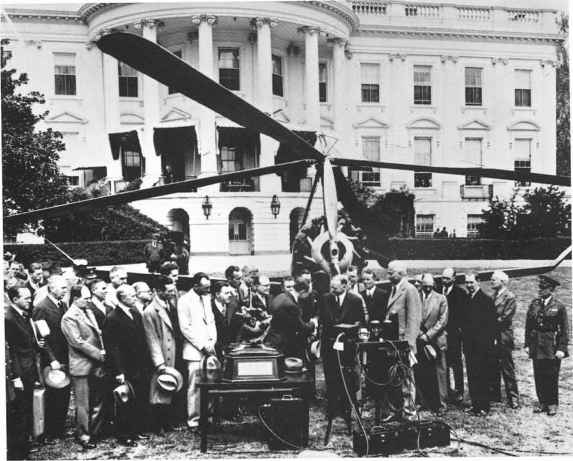
В 1931 году газета The Detroit News первой в истории купила PCA-2 для использования в журналистских целях. Машина хорошо летала на малой высоте, что позволяло репортерам делать удачные снимки с новых ракурсов. А еще PCA-2 использовали для установки рекордов — например, знаменитая летчица Амелия Эрхарт 8 апреля 1931 года набрала на нем высоту 5 615 метров.

1934 год. Бензиновые забастовки в Париже
В 1930-х годах машины начали активно замещать остальные виды транспорта. Руководство Франции обратило на это внимание и в 1934 года ввело для граждан налог на бензин. Закон распространялся и на таксистов. 6 февраля в Париже начался митинг против налога, в котором активно участвовали водители.
В тот день только 800 из более 7 000 столичных таксистов выехали на работу. Остальные водители останавливались на площадях, протестуя против принятия закона. По данным прессы тех лет, в городе было около 400 точек, на которых бастовали таксисты. Они перекрыли главные транспортные артерии города, после чего полиция начала задержания.
Среди таксистов Парижа тех лет было немало русских эмигрантов, уехавших из страны после революции и Гражданской войны. Большинство из них работало водителями и инженерами на автомобильных заводах Renault, Citroen, Delage и Peugeot.
Правда, большинство из них участия в забастовке не принимало. Помимо отмены налога на бензин, протестующие требовали повышения оплаты труда. Владельцы таксопарков сообщили эмигрантам, что в случае удовлетворения новых требований о заработной плате они позволят водителям иностранного происхождения составлять не более 10% рабочей силы. Это повлекло бы за собой увольнение нескольких тысяч водителей-эмигрантов.
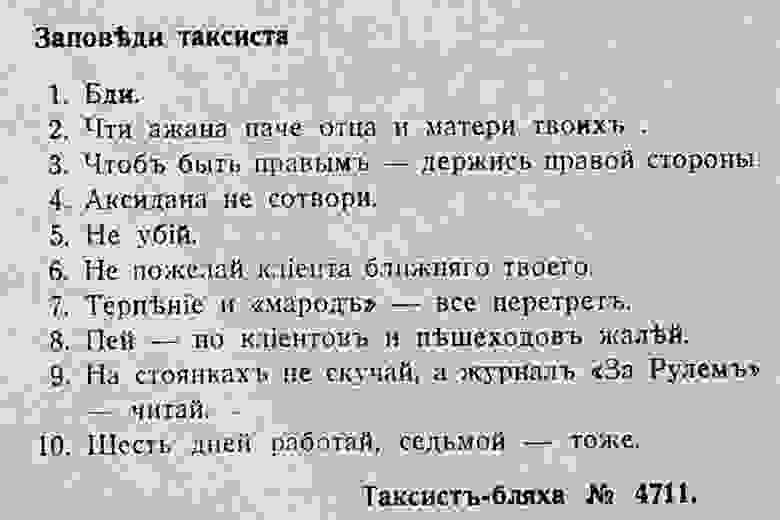
1947 год. Радиотакси в Кембридже
Переносимся в Кембридж — один из главных наукоградов Великобритании. Статус научной столицы обязывал город быть передовым в развитии технологий. В ролике мы видим взаимодействие таксиста и работника таксопарка по радио. После того, как водитель заканчивает заказ, он переговаривается с диспетчерской. Коллега диспетчера отмечает местоположение таксиста на карте, после чего ему сообщают, где поблизости можно забрать следующего пассажира.
Водитель такси сидит за рулем Austin 16 HP — первом автомобиле Austin Motor Company, запущенном в производство после окончания Второй Мировой войны. Также это первый автомобиль Austin, в котором использовался новый 4-цилиндровый двигатель с верхним расположением клапанов. Максимально заявленная скорость Austin 16 HP — 121 км/ч.
Зимой 1947 года группа водителей на 3 автомобилях Austin 16 HP в рамках рекламной кампании за неделю посетила 7 столиц Европы. Несмотря на чрезвычайные трудности путешествия, вызванные сильным снегопадом, машины успешно завершили приключение и в срок прибыли на автосалон в Женеве. История путешествия рассказана в книге одного из участников Алана Хесса Gullible’s Travels.
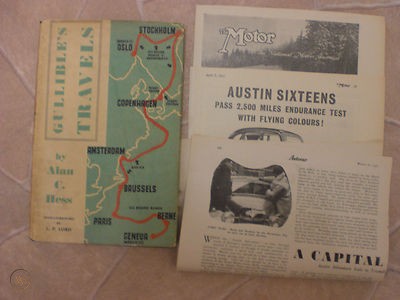
1959 год. Реставрация такси 1910-х годов
В 50-е годы XX века такси уже были доступны всем. В европейских столицах таксопарки регулярно пополнялись новыми моделями автомобилей. Но не забывали и про первые такси — на кадрах мы видим реставрацию машины французского производителя Unic 1912 года выпуска. Ее ремонтируют специалисты британской компании General Cab Company на заводе в Лондоне. Мастера аккуратно рисуют контур на только что покрашенном желтом колесе Unic, а также меняют кожаную обивку. Реставрация происходит по старым фотографиям и чертежам.
Компания Unic была основана автогонщиком Жоржем Ришаром и его братом Максимом. В 1905 году они встретились с бароном Анри де Ротшильдом и получили деньги на создание фирмы в городе Пюто. Целью было производство «уникальных» (отсюда и название) автомобилей, и вначале компания производила только легковые автомобили и такси с 2-цилиндровыми и 4-цилиндровыми двигателями.
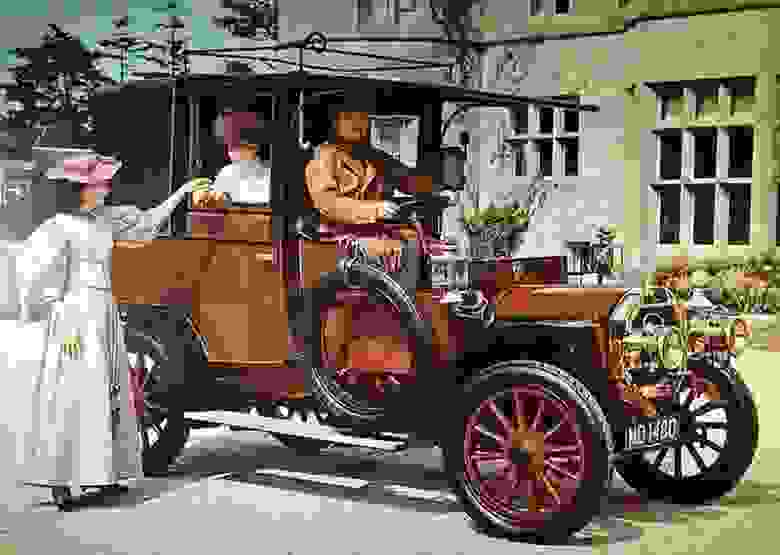
В ролике мастера ремонтируют автомобиль Unic Type C9F. Модель проработала в качестве такси в Лондоне практически 40 лет — до начала 1950-х годов. Несмотря на внешнюю громоздкость, Unic Type C9F спокойно разгонялся до 60 км/ч. Модель оснастили защитой днища, который уберегала узлы от пыли и камней, а также предохраняла от попадания на дорогу капель смазки.
1969 год. Соревнования советских таксистов
После окончательного закрепления таксистов на улицах городов, у них начали появляться свои соревнования. В 1969 году в Москве прошел чемпионат столичных таксистов. Водители соревновались на легендарных автомобилях ГАЗ-21 «Волга» в нескольких дисциплинах: демонстрировали навыки езды с препятствиями, меняли на скорость колеса и искали кратчайший маршрут к указанному адресу. История не сохранила, какие призы получил победитель, помимо цветов и поздравлений от коллег.
Модификация ГАЗ-21 для таксистов получила название ГАЗ-21Т. Рестайлинг базовой модели «Волги» произошел в апреле 1962 года. От обычной версии ее отличали приборная панель «под счетчик», отсутствие радиоприемника и штатной антенны.
Оставалось решить еще одну проблему — размещение крупных бытовых предметов в салоне машины. К сожалению, багажник ГАЗ-21 не всегда подходил для этих целей — много места съедало запасное колесо. Решение нашлось быстро — в 1963 году вместо штатного цельного переднего дивана на «Волгу» для таксистов начали устанавливать раздельное сиденье. Оно легко складывалось, освобождая место для багажа.
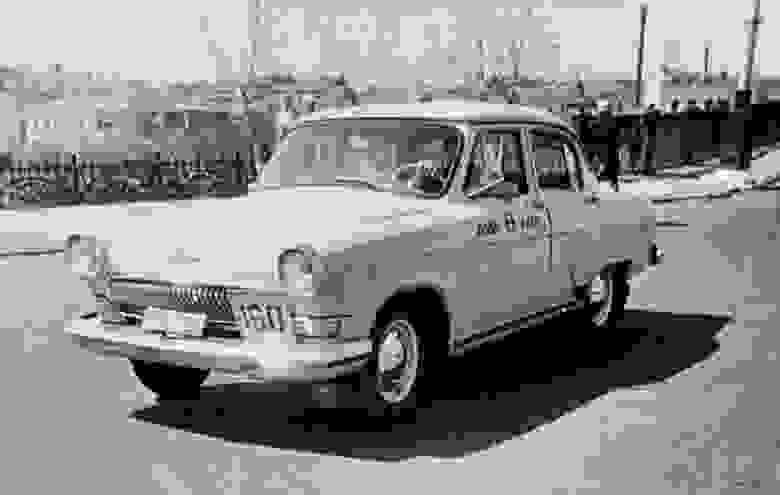
В период с 1966 по 1970 год ГАЗ-21 был основной моделью таксистов в большинстве городов СССР. И хотя не все машины были характерного желтого цвета, опознавательные знаки в виде двух полос шашек с буквой «Т» на дверях, шашек на капоте и багажнике уже применялись.
Такси ГАЗ-21 «Волга» работали в парках до 21 июня 1975 года. К этому времени их вытеснили более современные таксомоторы ГАЗ-24-01 «Волга». Но это уже совсем другая история.
Заключение
Сегодня такси — один из самых удобных способов передвижения. У нас в распоряжении есть приложения для заказа, в которых можно выбрать класс машины, время подачи и другие дополнительные опции. Но видео British Pathe показывают, какой долгий и трудный путь прошло такси в XX веке.
Спасибо, что дочитали статью до конца. Буду рад, если вы порекомендуете интересные темы, связанные с историей такси и транспорта в целом. Если у вас есть вопросы или уточнения — пишите их в комментариях.
The world’s finest news and entertainment video film archive
Introduction
British Pathé was once a dominant feature of the British cinema experience. Before the advent of television, millions around the globe came to movie theatres for their weekly dose of filmed news. The birth of this phenomenon took place when renowned French filmmaker Charles Pathé came to London in 1910 to introduce an innovative medium to British audiences – the cinema newsreel.
Over the course of a century, British Pathé reported on everything from armed conflicts and seismic political crises to the curious hobbies and eccentric lives of ordinary British people. In so doing, the organisation set the benchmark for cinematic journalism, blending information and entertainment with unparalleled success and influencing whole generations of Britons.
Pathé Before British Pathé: 1896 to 1910
The earliest footage in the British Pathé archive today dates from as early as the 1890s. Much of it is short and features little in the way of plot. Nevertheless, many are well worth a watch as typical examples of early cinema. Film was still new, the first motion picture images having been captured by Louis Le Prince in 1888 in Leeds. Short, every-day subjects still had the power to thrill (such as in the famous Lumière film The Arrival of a Train at La Ciotat Station). But this was also an era of great experimentation and innovation, as can be seen in the rather marvellous work of Georges Méliès and Robert W. Paul.
It was in this context that Charles, Emile, Théophile and Jacques Pathé founded Société Pathé Frères in France in 1896 and began film production. The glimpses of Victorian and Edwardian life they captured are as fascinating today as they were when they were shot – then because the technology involved was so new, and today because the footage is so old. The Victorian era was the first to be documented in moving images, yet still with a rarity that makes viewing them an awe-inspiring experience.
In 1897, Société Pathé Frères went public under the, rather lengthy, name Compagnie Générale des Etablissements Pathé Frères Phonographes & Cinématographes (or CGPC). Doubt remains about some of the clips in the archive from the early CGPC era in terms of their locations and dates. Records were either not made at the time or have been lost. The material which can be identified with at least some confidence is often of great historical interest. There is the funeral of William Gladstone, footage of the Boer War, and the coronation procession of Edward VII. The archive also contains film of Queen Victoria at a garden party, her Diamond Jubilee, and her funeral. Material from the Edwardian period includes the 1906 San Francisco Earthquake and the 1908 London Olympics.
Queen Victoria in Dublin.
CGPC continued filming for many years, distributing films and expanding its theatre empire across much of the Western World. It was not, in fact, until 1908 that the company invented the newsreel. The first was Pathé-Faits Divers in France, though it was renamed Pathé Journal in 1909. The following year, CGPC launched an American newsreel arm to produce Pathé News, as well as opening a newsreel production office on Wardour Street in London. The first UK newsreel was thus produced, under the Pathé’s Animated Gazette brand, in February 1910. The French, British, and American newsreel arms would often share footage with their colleagues overseas. For this, British Pathé can be thankful, for it placed pre-1910 material in the hands of the UK newsreel staff, who often made good use of it by producing retrospectives.
True Beginnings: 1910 to 1933
Many of the early newsreels are sadly missing. One of the earliest still within the archive is believed to be the departure of the Terra Nova, Captain Scott’s famous ship that took him to the Antarctic. It was a section of the 87th newsreel package, released in cinemas in December of 1910, and was one of eight stories that included flooding in Worcester and a railway crash in Willesden. Other early footage of note includes the coronation of George V and the death of suffragette Emily Davison.
The Pathé Building on Wardour Street, London.
The archive also contains an extensive collection of World War One material, much of which remains unidentified, with dates and locations often unclear. Cataloguing is not helped by a lack of clarity over which events have been captured as they occurred and which are staged. Regardless, the material remains incredible to view. Though silent, grainy, and black-and-white, the footage is often awesome and sometimes harrowing. The faces of the daring recruits, huddled in their trenches, many about to die, are preserved for posterity. It is a shame that we cannot put a name to them.
Footage from the Western Front … probably.
In this case the faces of the soldiers are chillingly hidden by gas masks.
From 1918, CGPC began to be run as two separate divisions, with Pathé-Cinema (films and newsreels) under the control of Charles Pathé, and Pathé Records (music) overseen by brother Emile Pathé. This was the first step towards the eventual splintering of the company that can cause endless headaches for anyone attempting to trace the history of the Pathé brand:
– The USA Pathé-Cinema arm (including Pathé News) was sold in 1921. It was run by Pathé Exchange and then RKO Radio Pictures, which shut down the film production arm. Warner Brothers purchased the newsreel arm in 1947 before selling it to Studio Films. Pathé News disappeared from cinemas in the 1950s. Its archive is now owned by the Sherman Grinberg Film Library.
– In 1927, CGPC also sold the UK arm of Pathé-Cinema, which included both the film production office and the newsreel office, to First National, forming First National-Pathé.
– In 1928 CGPC sold the French and UK arms of Pathé Records to the British Columbia Graphophone Company. The USA arm of Pathé Records was sold the following year to the American Record Corporation. Its assets now lie with Sony.
– The remaining assets of CGPC (such as the French film production arm, the international cinema chain, and the French Pathé Journal newsreels) were taken over by Bernard Natan to form Pathé-Natan. It changed hands a few times after that before becoming the present-day film company “Pathé”. Pathé Journal continued until 1981. Its newsreel archive now lies with Gaumont-Pathé.
This was the complicated process by which the UK newsreel company became divorced from its overseas parent and sister companies, never to be reunited. Pathé-branded newsreel and film production in the UK was now on its own.
Audiences could watch – and, thanks to the introduction of sound, hear – Albert Sandler playing “Hungarian Dance” by Brahms in this 1930 edition of Pathetone Weekly.
As First National-Pathé, newsreels were released under the name of Pathé Gazette and an internationally-distributed newsreel was produced from Wardour Street – Pathetone Weekly. But the great innovation of this period was, of course, the introduction of sound in 1930. This brought a new immediacy and reality to the footage, despite the limitations of early technology.
Sound also allowed newsreels to start including interviews, and one early interviewee was the Editor of the Pathé Gazette himself, upon the occasion of the UK newsreel’s twenty-first anniversary. In the clip, the Editor takes the opportunity to look back on what his company has achieved so far and on the recent history that has been captured by the Pathé cameramen. We may not be able to witness the Norman Conquest or the Great Fire of London, the Editor says, but we can relive history which has been preserved through the magic of newsreels: “One of cinema’s greatest privileges is to be able to bring back the past.” The company had proven its worth.
A title card from a Pathé Super Sound Gazette.
But in 1931, Warner Brothers purchased First National and formed Warner Brothers-First National and the future of the Pathé brand looked uncertain. That is, until 1933, when the golden age of British Pathé really began.
A Golden Age: 1933 to 1958
In 1933, British International Pictures purchased the Pathé newsreel and feature film brand from Warner Brothers-First National. Associated British-Pathé was born, under the umbrella of the Associated British Picture Corporation, and soon the Pathé brand was enjoying something of a golden age in the United Kingdom.
In the 1930s, the newsreel staff became increasingly ambitious, providing audiences not only with quantity (one only needs to see News In a Nutshell to know that audiences were enjoying this regular dose of news enough to warrant 340 episodes of it), but also with variety. Would You Believe It?, for instance, is a little-known gem assorting footage of various unusual things from around the world, such as oddly-named streets, strange animals, and bizarre technological breakthroughs. At the same time, Feminine Pictorialities continued the company’s trend of providing for all audiences that had begun with Eve’s Film Review in the 1920s. This “special selection for the ladies” covered bathing and hat fashions, hairstyles, and women’s sport.
The war years, quite unsurprisingly, produced some of the most dramatic material ever captured on film by a newsreel company, including the astonishing events at Dunkirk and the D-Day Landings. But other notable stories from around this time include the destruction of the Hindenburg (which was unbelievably captured in 1937), the first majority Labour government, the independence of India and Pakistan, and the 1948 London Olympics.
Following the war, despite having been completely separate companies for two decades, the newsreel companies Associated British-Pathé (UK), Pathé Journal (France), and Pathé News Inc (USA) began a unique partnership. In a move celebrated by President Truman, these organisations began sharing footage and cameramen in order to enable news to be more easily distributed worldwide. Pathé Gazette also rebranded itself – from 1946 until 1970, it would be known simply as Pathé News. One of the major stories from this period was the Korean War, that sometimes criminally-forgotten conflict that claimed an estimated 2.5 million lives.
Newsreel staff at work in 1953.
Associated British-Pathé was also busy producing feature films and commercials, and even expanding into the television market. One such production was Film Fanfare, a charming 1950s film magazine show that presented viewers with footage from recent glamorous premieres as well as featuring in-studio interviews, quizzes, and reviews of what are now classic motion pictures. However, the most impressive example of the television work done was the company’s involvement in Peter Baylis’s Time To Remember. This epic series touched on all aspects of life in the first half of the Twentieth Century, using the original newsreel footage, and was narrated by celebrated actors, including Sir Michael Redgrave and Sir Ralph Richardson. Its charm was such that in 2010, the BBC re-edited and re-broadcast the series for a modern-day audience, retaining much of the original commentary.
But television posed more of a threat than an opportunity for the company, especially for the newsreel staff. They could release the Queen’s coronation in glorious colour, and even film it in 3D(!), but it was not a live broadcast like that of the BBC coverage. Viewers were increasingly not willing to wait. The newsreel format was also beginning to look tired, with outdated patriotism at odds with the postcolonial attitudes of the British public (particularly during the Suez Crisis). By the end of the 1950s, Pathé News was already struggling to compete. The 1960s would witness a shift in the nature of the company’s output as it tried to survive.
Decline and Transformation: 1958 to 2008
In 1958, Warner Brothers merged with Associated British Picture Corporation (parent company of Pathé-branded newsreel and feature film producers, Associated British-Pathé) to form Warner-Pathé. It was around this time that colour was introduced into regular news production (it had hitherto been saved for special documentaries such as Elizabeth Is Queen). But the company needed more than colour in order appeal to consumers who were increasingly getting their hard news from live television. Other newsreel brands went out of business, and the company needed to adapt if it was going to survive. The answer it found was to focus on the quirks of humanity.
Warner-Pathé offices on Wardour Street, 1963. Warner-Pathé was a jointly-owned subsidiary of the Associated British Picture Corporation and Warner Brothers.
“Cinemagazines” were not an invention of the 1960s. They actually date right back to 1913 and the Kinemacolor Fashion Gazette, though it was Pathé-Cinema which perfected the form with 1918’s Pathé Pictorial. But the 1960s were the cinemagazine’s heyday. Colourful, quirky, and fun, they were also light on information and hard news. In some ways, this footage is more valuable today than when it was filmed. At the time, mere light entertainment, it now serves as a window into the leisure activities of the British people in the 1960s. Indeed, the collection was used extensively in the 2012 BBC Four series British Passions on Film.
The opening of the final edition of Pathé News in February 1970.
Regardless of the merit of the output, the company simply could not compete with the rise of television. Its parent, Associated British Picture Corporation, was itself producing quality TV and owned a majority share in Thames Television, founded in 1968. The next year, the final Pathé Pictorial cinemagazine was released, shortly followed by the last edition of Pathé News. This was when Associated British-Pathé went through a radical transformation, from an active production house, into a film archive.
As the staff on Wardour Street were wrapping up their long history of news and feature film production, they were purchased by EMI (which later became Thorn EMI). The cameras in Wardour Street may have stopped rolling, but an archive of historic importance remained. The value of its content was immediately clear and television programmes, such as ITV’s Clapperboard, featured visits to the archive. The collection was now available to be mined by future generations of filmmakers and documentarians, and licensing became the chief occupation of the archive staff.
The Archive under EMI ownership.
After a long period without much change, a significant development took place in the later 1980s. Thorn EMI was purchased by The Cannon Group in 1986, which sold the Associated British-Pathé newsreel archive the following year. Cannon did not, however, sell the assets of the feature film arm of Associated British-Pathé. Thus, for the first time, the Pathé-branded UK feature film and newsreel arms were separated, as they remain today. (The feature film assets now lie with StudioCanal.) By 1990, the archive was operating as British Pathé News. It was at this time that the company produced the series A Day That Shook the World and Twentieth Century Hall of Fame, as well as Year to Remember, which is still popular on DVD today. Co-productions with such respected partners as the BBC enabled staff to work with material filmed after Pathé News closed its doors.
1995 marks an important year in the recent history of the archive. Firstly, British Pathé News was purchased by the Daily Mail and General Trust. Secondly, the name was shortened to British Pathé (plc, later Ltd). From 2003 to 2009 the archive was represented by ITN Source and became a respected resource for filmmakers, museums and educators. During this time, the entire archive was digitised in an effort funded partly by the National Lottery. This has allowed the British Pathé collection to be placed online for everyone to explore.
The Independent Archive: 2008 to the present day
Upon its split from the Daily Mail in 2008, British Pathé Ltd became, in essence, an independent archive (as opposed to a part of a larger corporation) for the first time in its history. This new era saw the introduction of a museum subscription service, an increase in licensing and programming (notably including The Story of British Pathé, a four-part BBC Four series), and an expansion in the company’s online presence (the entire archive is available to view online for free on both the British Pathé website and YouTube channel. It is complemented by presence on numerous social media channels). In 2012, the archive was awarded “Footage Library of the Year” at the Focal International Awards – and again in 2017.
For the foreseeable future, British Pathé looks set to remain a remembered and respected brand within the British cultural consciousness.
As of 2018, British Pathé also represents the Reuters historical collection, which includes more than 136,000 items from Reuters-owned news agencies Gaumont Graphic (1910-1932), Empire News Bulletin (1926-1930), British Paramount (1931-1957), and Gaumont British (1934-1959), as well as Visnews content from 1957 to the end of 1984.
The British Pathé Ltd logo as it was in 2009.














